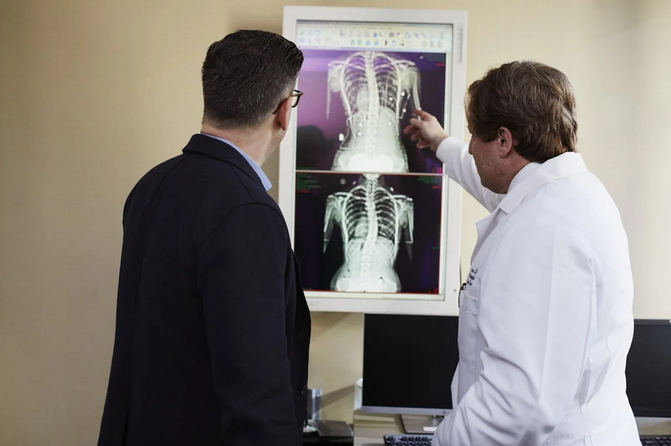Are you tired of constantly battling with back pain that seems never to go away? You’re not alone. Back pain can be a real nuisance, affecting your daily life and overall well-being. But have you ever stopped to think about what’s really causing that discomfort? in cases where the pain is consistent, your doctor may recommend to get a spinal MRI, and Biomed Scan is often recommended. At Biomed Scan, patients seeking clarity on spinal conditions can experience state-of-the-art spine MRI services. Discover how Biomed Scan’s commitment to quality and patient comfort makes spine MRI a smooth and informative process.
Let’s peel back the layers and uncover the root causes of back pain that you need to know.
Muscle or Ligament Strain

One of the most common causes of back pain is a muscle or ligament strain. This often happens when you lift something heavy incorrectly or make a sudden, awkward movement. The muscles and ligaments in your back can become stretched or torn, leading to discomfort and stiffness. When you experience a strain, it’s essential to give your body time to rest and recover. Applying ice packs and taking over-the-counter pain medication can help reduce inflammation and alleviate some of the pain. Gentle stretching exercises may also aid in improving flexibility and strengthening the affected area.
Herniated Disc
Let’s dive into the complex world of back pain and explore one of its common culprits – the herniated disc. Picture this: your spinal discs act as cushions between the vertebrae, but when one of them protrudes or ruptures, it can put pressure on nearby nerves, leading to discomfort and pain. A herniated disc can be triggered by various factors like age-related wear and tear, sudden movements, or even improper lifting techniques. The symptoms may vary from localized pain to radiating numbness or tingling sensations down the arms or legs.
Treatment options range from conservative methods like physical therapy and medication to more invasive procedures such as epidural injections or surgery in severe cases. It’s crucial to consult with a healthcare professional for an accurate diagnosis and tailored treatment plan based on your specific condition.
Degenerative Disc Disease
As we age, our bodies undergo various changes, and one common issue that can arise is degenerative disc disease. This condition affects the discs that cushion the vertebrae in our spine, causing them to break down over time. The deterioration of these discs can lead to pain, stiffness, and reduced mobility in the affected area. Degenerative disc disease often manifests as chronic back or neck pain that may worsen with certain movements or activities. It can be a result of wear and tear on the spine from years of poor posture, repetitive stress, or even genetic factors. While it is more common in older adults, younger individuals who engage in strenuous physical activities may also develop this condition.
Osteoarthritis

As we delve deeper into the layers of back pain, another common culprit that emerges is osteoarthritis. This degenerative joint disease can affect any part of the spine, leading to stiffness, pain, and decreased mobility. Osteoarthritis occurs when the protective cartilage that cushions the ends of bones wears down over time. The breakdown of cartilage can result in bone-on-bone contact within the joints, causing inflammation and discomfort. As osteoarthritis progresses, bony growths called bone spurs may develop, further exacerbating symptoms. While aging is a significant risk factor for this condition, other factors such as genetics, obesity, and previous injuries can also contribute to its onset.
Remember that prevention is key when it comes to maintaining a healthy spine. Practicing good posture, engaging in regular exercise to strengthen core muscles, and avoiding activities that put unnecessary strain on your back can help prevent future episodes of pain. By staying informed about the root causes of back pain and taking proactive steps to care for your spine, you can improve your quality of life and reduce the impact of this all-too-common condition. So next time you feel an ache or strain in your back, remember that knowledge is power when it comes to addressing the layers of discomfort lurking beneath the surface.
